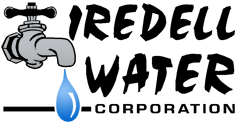Iredell Water Asks for the Public’s Help with Water Service Line Inventory Effort
April 12, 2024
STATESVILLE, NC, April 12, 2023: To continue its compliance with the United States Environmental Protection Agency’s (EPA) revised Lead and Copper Rule (LCR), Iredell Water announced today the launch of a new online survey designed to help customers identify their water service lines on their private properties or inside their homes and businesses.
Water service lines are pipes that connect Iredell Water’s mains to water meters and from water meters to private interior plumbing. Before its use was banned in 1986, lead was often used for water service lines in many parts of the country. The EPA’s Lead and Copper Rule was changed to include new regulations aimed at locating lead lines that haven’t been found so they can be removed from the nation’s water systems, as well as from private homes and businesses.
Iredell Water is currently conducting an inventory of all its water service lines, which will be reported to the public in compliance with the EPA’s October 2024 deadline.
Meanwhile, the EPA’s required inventory on a customer’s private property or in their home or business creates several steps that could intrude on a person’s time and privacy. As a result, Iredell Water developed an online customer survey to enable a home or business owner or resident to look for lead lines themselves and report their findings, including the ability to submit a picture of their service line where it enters the home or business.
Over the next few days, Iredell Water customers whose homes or businesses were built and connected to the Iredell Water system before March 1987 will receive a direct mail card that describes the water service line inventory effort and provides a QR code to enable customers to identify their service lines quickly and easily. The survey can also be found by visiting www.IredellWater.com.
It is important to note that lead is NOT in Iredell Water’s drinking water when it leaves the distribution system, nor is it in the water as it travels through our water mains. However, in some older homes, lead may be present in the pipe connecting the home to the water meter – known as a service line -- or in the home plumbing such as valves, fittings, and faucets.
Lead in service pipes, plumbing or fixtures can dissolve, or particles can leach into the water and end up at the tap. Iredell Water uses a safe additive as part of our water treatment process that greatly reduces the possibility that lead from your private plumbing could enter your drinking water.
“Since Iredell Water’s inception in 1966, our construction standards have never allowed for lead service pipe to be installed for services from the water main to the meter,” said Danny Sloan, Iredell Water’s General Manager/CEO. “However, we don’t know what our customers might have installed on their properties. We hope this survey will help everyone find lead lines wherever they may be.”
It is important to note that the EPA’s Lead and Copper Rule does not require an immediate replacement of a found lead service line; it instead requires utilities that find lead to develop a fair and equitable replacement program for its lines and advise customers on how to replace the lead lines on their properties.
Why? Because if a lead service line is found, it does not mean the customer or anyone else has been exposed to lead. Utilities like Iredell Water use an effective corrosion control program that greatly reduces the possibility that lead from service lines could end up in drinking water.
The survey is designed to make this important effort easy on the customer. If a customer believes they have lead in their home or business, they can simply follow the instructions on the survey to set up an appointment with Iredell Water staff.
For more information on the sources and risk of lead exposure, and how you can reduce your possible exposure to lead in drinking water, visit www.IredellWater.com.

